�
NETWORKING
FUNDAMENTALS
Networking Fundamentals: Wide, Local and Personal Area Communications Kaveh Pahlavan and
Prashant Krishnamurthy © 2009 John Wiley & Sons, Ltd. ISBN: 978-0-470-99289-0
NETWORKING
FUNDAMENTALS
Wide, Local and Personal Area
Communications
KAVEH PAHLAVAN
Worcester Polytechnic Institute, USA
PRASHANT KRISHNAMURTHY
University of Pittsburgh, USA
�
This edition first published 2009
# 2009 John Wiley & Sons Ltd.,
Registered office
John Wiley & Sons Ltd, The Atrium, Southern Gate, Chichester, West Sussex, PO19 8SQ, United Kingdom
For details of our global editorial offices, for customer services and for information about how to apply for
permission to reuse the copyright material in this book please see our website at www.wiley.com.
The right of the author to be identified as the author of this work has been asserted in accordance with the
Copyright, Designs and Patents Act 1988.
All rights reserved. No part of this publication may be reproduced, stored in a retrieval system, or transmitted,
in any form or by any means, electronic, mechanical, photocopying, recording or otherwise, except as permitted
by the UK Copyright, Designs and Patents Act 1988, without the prior permission of the publisher.
Wiley also publishes its books in a variety of electronic formats. Some content that appears in print may
not be available in electronic books.
Designations used by companies to distinguish their products are often claimed as trademarks. All brand names
and product names used in this book are trade names, service marks, trademarks or registered trademarks of their
respective owners. The publisher is not associated with any product or vendor mentioned in this book. This
publication is designed to provide accurate and authoritative information in regard to the subject matter covered.
It is sold on the understanding that the publisher is not engaged in rendering professional services. If professional
advice or other expert assistance is required, the services of a competent professional should be sought.
Library of Congress Cataloging-in-Publication Data
Pahlavan, Kaveh, 1951-
Networking fundamentals : wide, local, and personal area communications /
Kaveh Pahlavan.
p. cm.
Includes bibliographical references and index.
ISBN 978-0-470-99289-0 (cloth) – ISBN 978-0-470-99290-6 (pbk.) 1.
Computer networks. I. Title.
TK5105.5.P343 2009
004.6–dc22
2009004131
A catalogue record for this book is available from the British Library.
ISBN 9780470992890 (H/B) 9780470992906 (PBK)
Typeset in 10/12pt Times by Thomson Digital, Noida, India.
Printed and bound in Great Britain by Antony Rowe, Chippenham, UK
�
CONTENTS
About the Authors
Preface
1 Introduction to Information Networks
1.1
Introduction
1.1.1 Elements of Information Networks
1.1.2 Chronology of Information Networks
1.1.3
1.1.4 Evolution of Long-Haul Multiplexing Standards
Standards Organizations for Information Networking
1.2 Evolution of Wide-Area Networks
1.2.1 Evolution of the Public Switched Telephone Network
1.2.2 Emergence of the Internet
1.2.3 HFC Infrastructure for Cable TV
1.2.4 Evolution of Cellular Telephone Networks
1.3 Evolution of Local Networks
1.3.1 Evolution of Local Access to Public Switched
Telephone Network
1.3.2 Evolution of the IEEE 802.3 Ethernet
1.3.3 Evolution of the IEEE 802.11 Wireless Local-Area Network
1.3.4
1.3.5 Evolution of IEEE 802.15 Wireless Personal-Area
Internet Access to Home and IEEE 802.16
Networks
1.4 Structure of the Book
Questions
Project 1
PART ONE: FUNDAMENTALS OF TRANSMISSION AND ACCESS
2 Characteristics of the Medium
Introduction
2.1
2.2 Guided Media
2.2.1 Twisted Pair
xiii
xv
1
1
3
5
7
10
13
14
15
17
17
18
19
21
22
24
28
30
31
32
33
35
35
36
38
v
�
vi
CONTENTS
2.2.2 Coaxial Cables
2.2.3 Optical Fiber
2.3 Wireless Media
Path-Loss Modeling and Signal Coverage
Path-Loss Models for Indoor Areas
Path-Loss Models for Outdoor Areas
2.3.1 Radio Propagation Mechanisms
2.3.2
2.3.3
2.3.4
2.3.5 Effects of Multipath and Doppler
2.3.6 Emerging Channel Models
Questions
Problems
Project 1: Simulation of Multipath Fading
Project 2: The RSS in IEEE 802.11
Project 3: Coverage and Data Rate Performance of the
IEEE 802.11B/G WLANs
3 Fundamentals of Physical Layer Transmission
3.1
Information Transmission
3.1.1 Wired and Wireless Transmission
3.1.2 Baseband Transmission
3.2 Transmission Techniques and Signal Constellation
Signal Constellation in Digital Communications
3.2.1 Multisymbol Digital Communications
3.2.2
3.2.3 Two-Dimensional Signal Constellations
3.2.4 Channel Capacity
3.3 Performance of the Physical Layer
3.3.1 Effects of Fading on Performance over Wireless Channels
3.3.2 Diversity Techniques
3.4 Wideband Modems
Space–Time Coding
Spread-Spectrum Transmissions
3.4.1
3.4.2 Orthogonal Frequency-Division Multiplexing
3.4.3
3.4.4 Capacity Multiple-Input–Multiple-Output Antenna Systems
Questions
Problems
Projects
4 Coding and Reliable Packet Transmission
Introduction
4.1
4.2 Source Coding and Framing Techniques
Information Source and Coding
Framing Techniques
4.2.1
4.2.2
4.3 FEC Coding
Fundamentals of Coding
4.3.1
4.3.2 Block Codes
4.3.3 Convolutional Codes
4.3.4 Codes for Manipulating Data
42
45
48
49
50
56
60
62
68
72
73
77
78
79
83
83
84
87
89
90
91
94
100
102
105
107
109
110
115
117
118
119
120
123
125
125
127
127
130
132
132
136
141
145
�
4.4 Coding for Spread-Spectrum and Code-Division Multiple
Access Systems
4.4.1
4.4.2 M-ary Orthogonal Codes
Pseudo Noise Codes
4.5 ARQ Schemes
Stop and Wait
4.5.1
4.5.2 Go-Back-N
4.5.3
4.5.4 Hybrid Automatic Repeat Request
Selective-Repeat Automatic Repeat Request
4.6 Flow Control Protocols
Stop and Wait
Sliding Window
4.6.1
4.6.2
Questions
Problems
5 Medium Access Methods
Introduction
5.1
5.2 Centralized Assigned Access Schemes
Frequency-Division Multiple Access
5.2.1
5.2.2 Time-Division Multiple Access
5.2.3 Code-Division Multiple Access
5.2.4 Comparison of Code-, Time-, and Frequency-Division
Multiple Access
Performance of Assigned Access Methods
5.2.5
5.3 Distributed Random Access Schemes
5.4
5.3.1 Random Access Methods for Data Services
5.3.2 Access Methods for Local-Area Networks
5.3.3
Performance of Random Access Methods
Integration of Voice and Data Traffic
5.4.1 Access Methods for Integrated Services
5.4.2 Data Integration in Voice-Oriented Networks
5.4.3 Voice Integration into Data-Oriented Networks
Questions
Problems
Projects
PART TWO: WIDE-AREA NETWORKS
6 The Internet
6.1
Introduction: Internet Infrastructure
6.1.1
Fundamentals of Packet Forwarding
6.2 Addressing
ISDN Addressing in Connection-Based PSTN
6.2.1
6.2.2 MAC Addressing in Connectionless
6.2.3
Local-Area Networks
IP Addressing in the Connectionless
Internet
CONTENTS
vii
147
148
149
151
151
153
153
154
155
156
158
159
159
165
165
167
168
171
174
177
180
184
184
191
196
205
205
205
211
217
218
222
225
227
227
229
230
231
233
235
�
viii
CONTENTS
6.3 Quality of Service
6.3.1 Quality of Service in Connection-Based Networks
6.3.2 Quality of Service in Connectionless Networks
6.4 Bridges
Standardization and Bridges
IEEE 802.1D Transparent Bridges
6.4.1
6.4.2
6.4.3 The Spanning-Tree Algorithm
6.4.4
6.4.5
IEEE 802.5 Source Routing Bridging
IEEE 802.1Q Virtual Local-Area Network
6.5 Switches
6.5.1 Circuit Switching in Public Switched Telephone
6.5.2
6.5.3
Network
Integrated Service Data Network Switching
Packet Switching over Public Switched Telephone
Network
6.5.4 Asynchronous Transfer Mode
6.6 Routers
6.6.1 Types of Router
6.6.2 Network Protocols for Routers
6.6.3 Routing Algorithms
6.6.4 Multiprotocol Label Switching
Questions
Problems
Project 1: Client-Server Programming
7 Cellular Networks
7.1
Introduction
7.1.1 The Cellular Concept
7.1.2 Cellular Hierarchy
7.2 General Architecture of a Cellular Network
7.2.1 Mobile Stations
7.2.2 The Base Station Subsystem
7.2.3 The Network and Switching Subsystem
7.3 Mechanisms to Support a Mobile Environment
7.3.1 Registration
7.3.2 Call Establishment
7.3.3 Handoff
7.3.4
Security
7.4 Protocol Stack in Cellular Networks
7.4.1 Layer 1: Physical Layer
7.4.2 Layer 2: Data Link Layer
7.4.3 Layer 3: Networking Layer
7.5 Physical Layer in TDMA Air Interface
7.5.1 Modulation Technique
7.5.2
7.5.3
Power and Power Control
Physical Packet Bursts
239
240
241
242
244
244
246
250
250
251
252
252
253
254
260
262
264
269
275
277
278
280
281
282
282
285
286
288
288
289
290
290
291
293
295
297
298
299
300
302
302
304
304
�
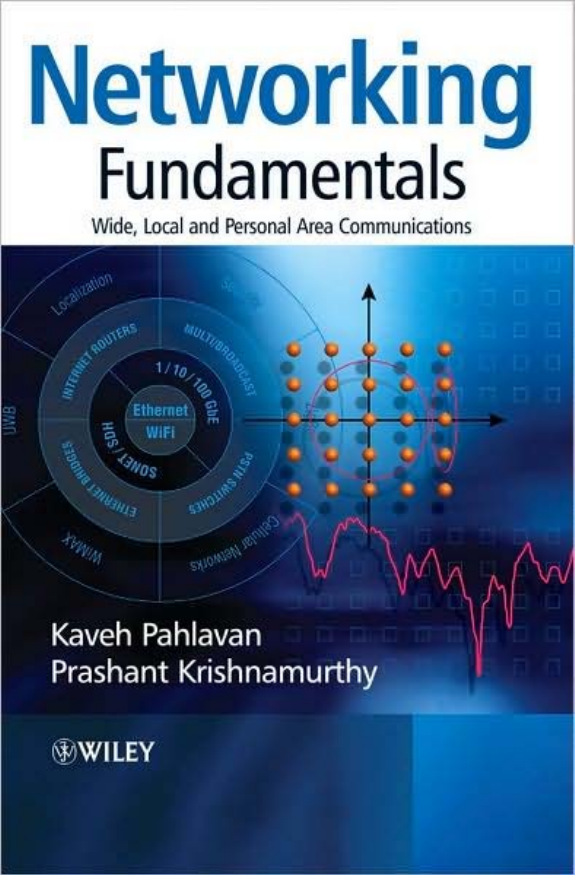
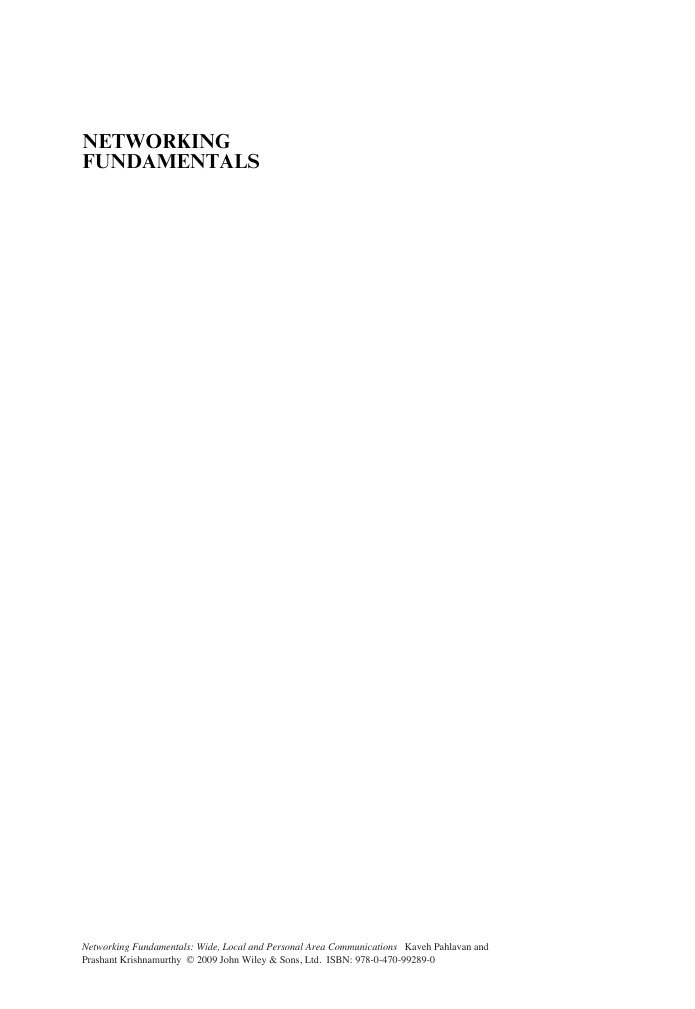
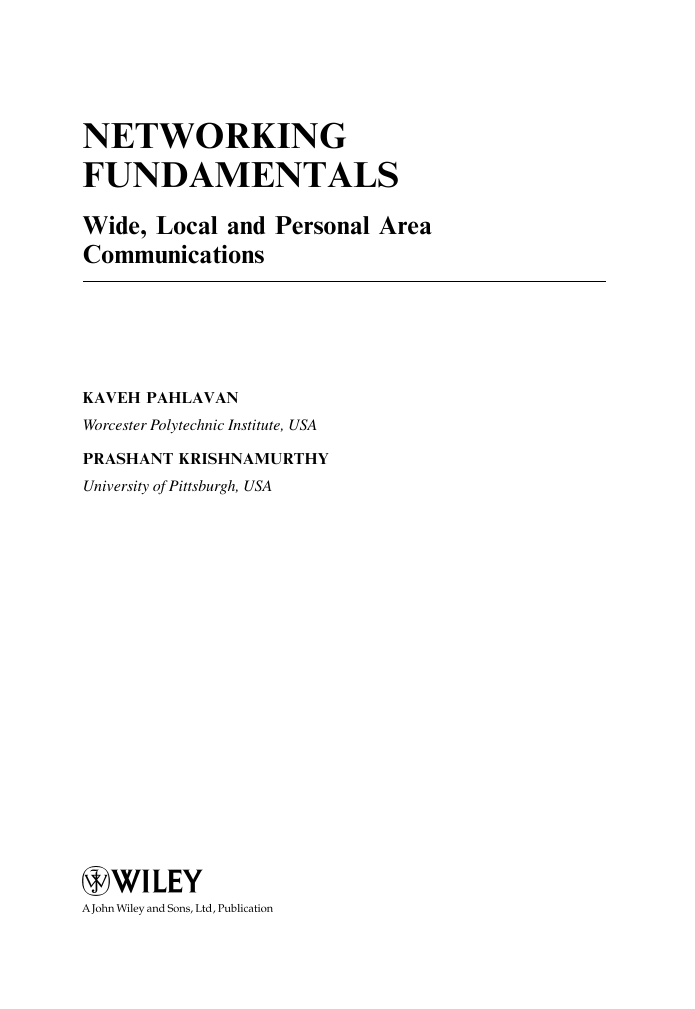
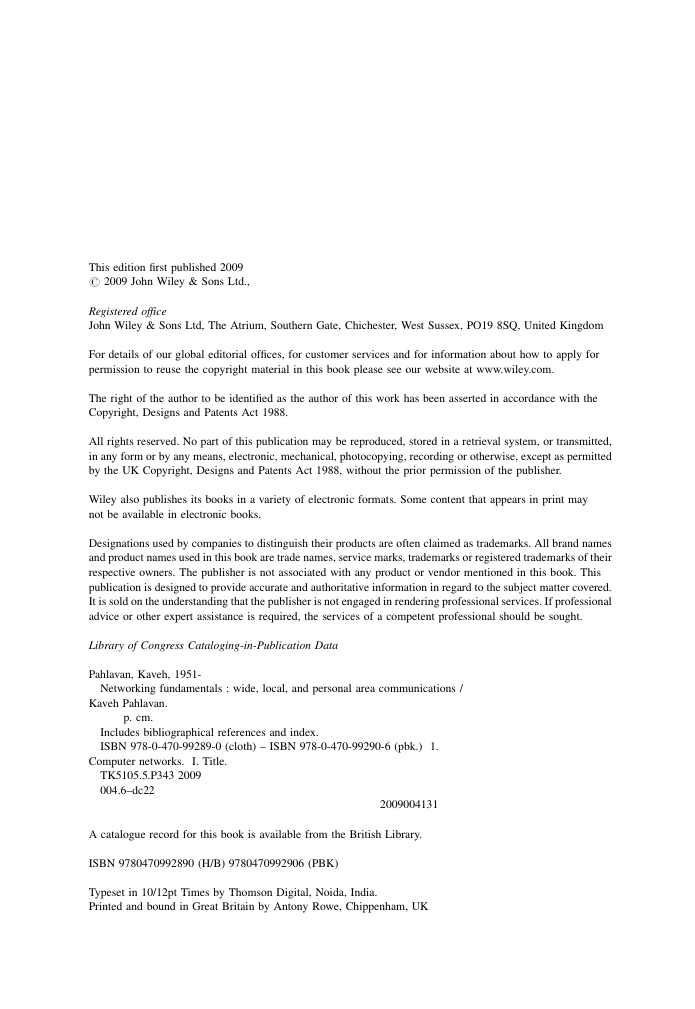



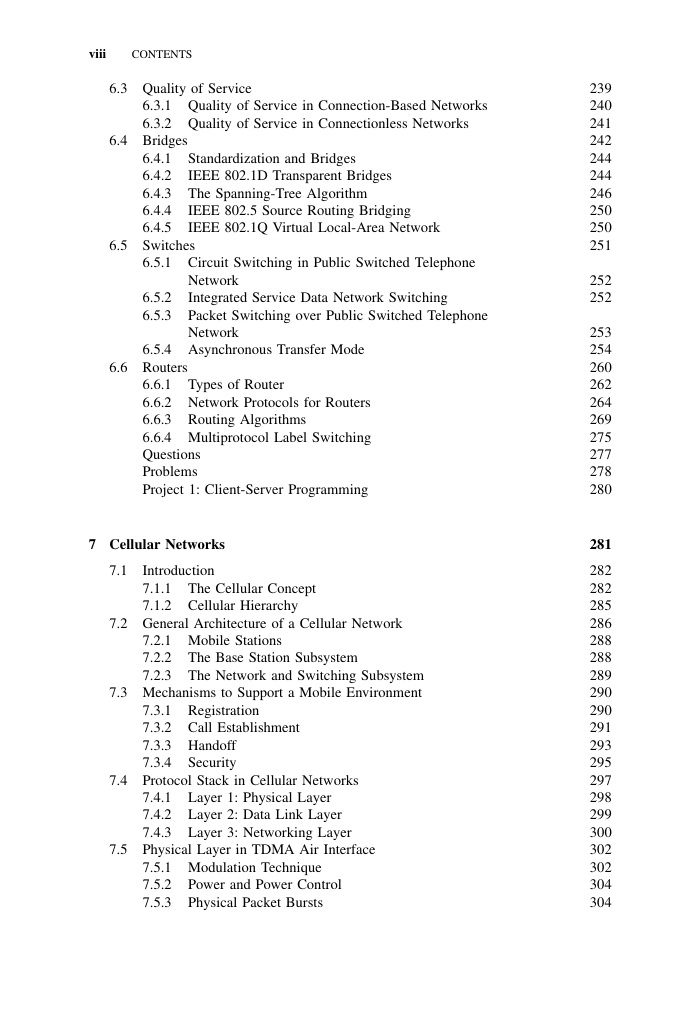








 2023年江西萍乡中考道德与法治真题及答案.doc
2023年江西萍乡中考道德与法治真题及答案.doc 2012年重庆南川中考生物真题及答案.doc
2012年重庆南川中考生物真题及答案.doc 2013年江西师范大学地理学综合及文艺理论基础考研真题.doc
2013年江西师范大学地理学综合及文艺理论基础考研真题.doc 2020年四川甘孜小升初语文真题及答案I卷.doc
2020年四川甘孜小升初语文真题及答案I卷.doc 2020年注册岩土工程师专业基础考试真题及答案.doc
2020年注册岩土工程师专业基础考试真题及答案.doc 2023-2024学年福建省厦门市九年级上学期数学月考试题及答案.doc
2023-2024学年福建省厦门市九年级上学期数学月考试题及答案.doc 2021-2022学年辽宁省沈阳市大东区九年级上学期语文期末试题及答案.doc
2021-2022学年辽宁省沈阳市大东区九年级上学期语文期末试题及答案.doc 2022-2023学年北京东城区初三第一学期物理期末试卷及答案.doc
2022-2023学年北京东城区初三第一学期物理期末试卷及答案.doc 2018上半年江西教师资格初中地理学科知识与教学能力真题及答案.doc
2018上半年江西教师资格初中地理学科知识与教学能力真题及答案.doc 2012年河北国家公务员申论考试真题及答案-省级.doc
2012年河北国家公务员申论考试真题及答案-省级.doc 2020-2021学年江苏省扬州市江都区邵樊片九年级上学期数学第一次质量检测试题及答案.doc
2020-2021学年江苏省扬州市江都区邵樊片九年级上学期数学第一次质量检测试题及答案.doc 2022下半年黑龙江教师资格证中学综合素质真题及答案.doc
2022下半年黑龙江教师资格证中学综合素质真题及答案.doc